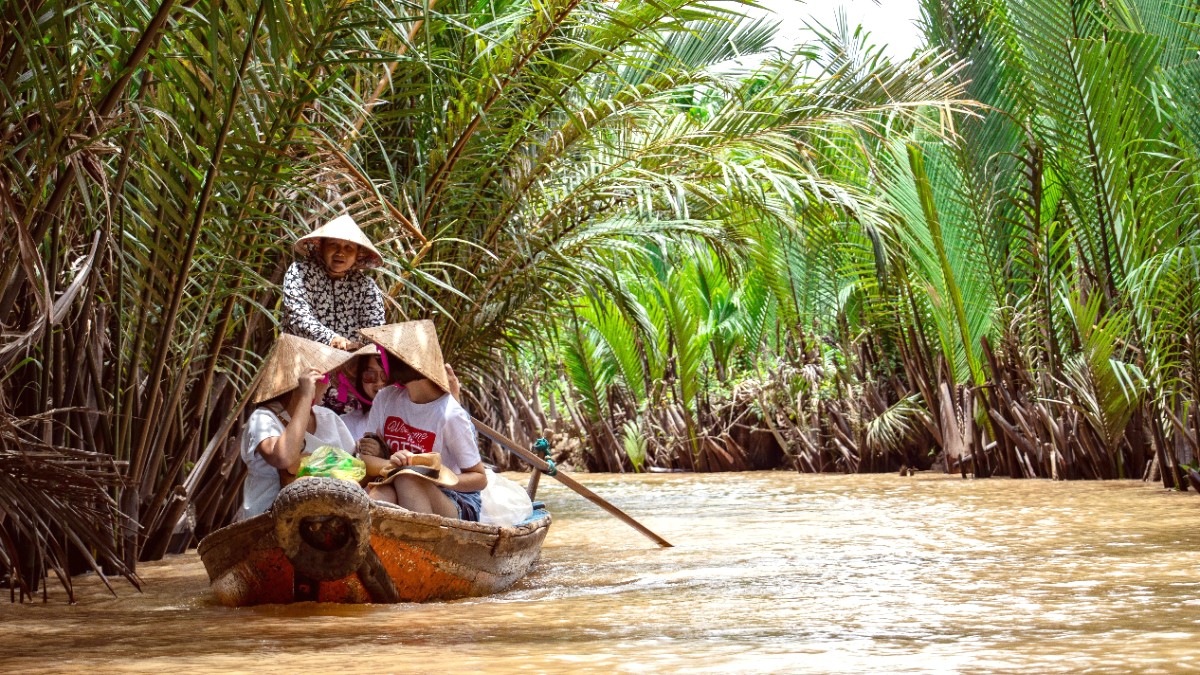
Mekong Delta, Vietnam
Can Tho's cuisine comes from its rich river system. Abundant fish, shrimp, tropical fruits, and vegetables form the basis of many dishes.
Its cooking uses balanced flavors: sweet, sour, salty, spicy. This balance comes from fish sauce, fresh lime, aromatic herbs, and chili. Influences from Khmer, Chinese, and French culinary traditions blend into local flavor.
Overall, flavors are sweet and sour, often with a hint of spice. This creates a refreshing and complex taste.
Can Tho cuisine especially uses fresh river produce. Dishes often use fermented fish (mắm), a pungent ingredient.
Wider use of coconut milk differentiates some Can Tho dishes, adding creamy richness.
A savory, crispy rice pancake. It comes filled with pork, shrimp, bean sprouts, and sometimes mushrooms. Served with fresh herbs and a sweet-sour fish sauce dipping sauce.
Look for local eateries with a large, sizzling wok visible from the street.
Can Tho's local version of the popular noodle soup. It has pork, shrimp, squid, or fish. Known for clear, flavorful broth, often sweeter than northern versions.
Available at many local noodle shops ("Quán Hủ Tiếu").
Grilled snakehead fish, often grilled whole over charcoal with straw. The charred skin is typically removed, and the flaky white meat is wrapped in rice paper with fresh herbs and dipped in a spicy, tangy sauce.
Find this at riverside restaurants or local BBQ spots.
Abundant and diverse. Try durian (if you dare!), mangosteen, rambutan, longan, pomelo, and star apple.
A specialty of the Mekong Delta, often handmade in small workshops. It has a sweet, chewy treat.
Mainly within luxury hotels like Vinpearl Hotel Can Tho and Muong Thanh Luxury Can Tho.
Numerous options near Ninh Kieu Wharf and in the city center.
Pervasive throughout the city, authentic and affordable.
Small boats sell breakfast, coffee, and fresh fruits directly to visitors early in the morning.
A unique experience of dining on the water.
A traditional indoor market with fresh produce, meats, seafood, and prepared foods.
It is a glimpse into local commerce.
Limited but present in city center.
Walk among fruit trees, pick and taste fresh fruits.
Observe production of rice paper, coconut candy.
Restaurants along Hau River have scenic views.
Use translation apps or pre-written cards in Vietnamese explaining your dietary restrictions.
An allergy card in Vietnamese clearly states restrictions. Carry one.
Focus on fresh fruits and simple, grilled dishes. Ingredients are visible, and preparation methods are clear.
Consider staying in accommodations with kitchenettes for strict dietary needs. This allows meal preparation.
Food often ties to harvest seasons, featuring fresh fruits that are ripe at specific times of the year.
Try Bia Hơi (local draft beer) or popular Vietnamese bottled beers like Bia Sài Gòn or 333 (Ba Ba Ba).
Learn to prepare Mekong Delta specialties like Bánh Xèo (sizzling pancakes) or fresh spring rolls.
Visit fruit orchards (e.g., My Khanh Tourist Village, Vam Xang Rustic Charm, Phong Dien area).
Visit small, family-run businesses to see production of local crafts like rice paper, coconut candy, or traditional rice noodles.
Enjoy drinks or meals at cafes and restaurants along Ninh Kieu Wharf.
Watch the river traffic and absorb the peaceful ambiance.
Restaurants along the Hau River have scenic views.
This creates a pleasant backdrop for meals, especially in the evening.
Cooking classes and food tours deepen appreciation for local dishes.
Farm visits mean picking and tasting fresh tropical fruits directly.
Eating directly from vendor boats on the floating market is an unique tradition.
Can Tho's culinary scene is a highlight of the Mekong Delta experience.